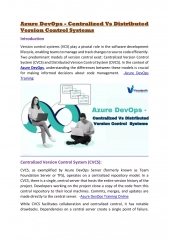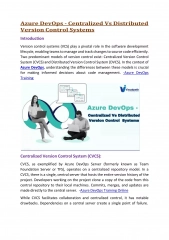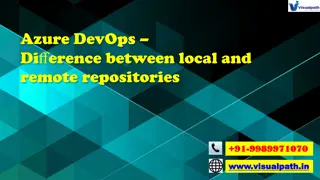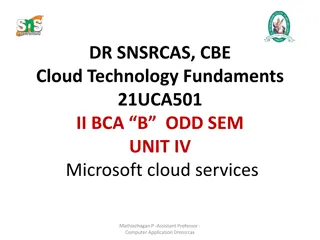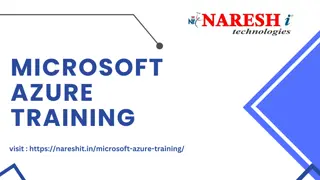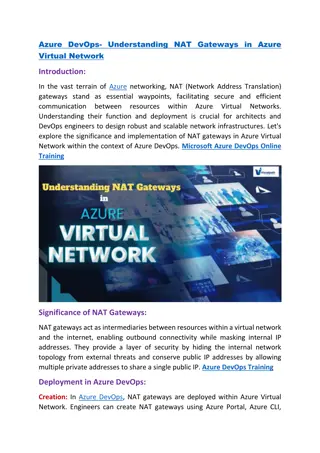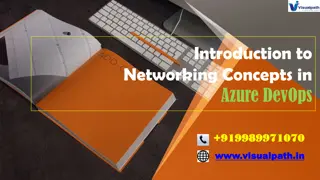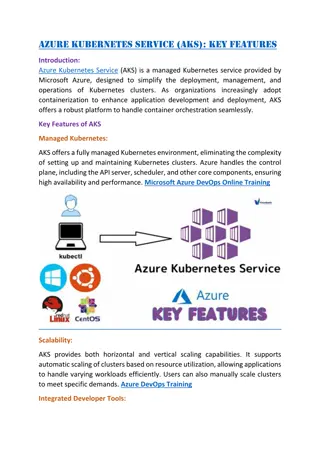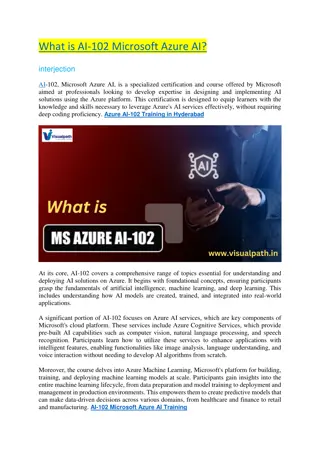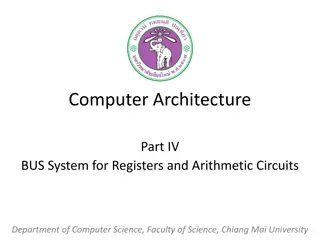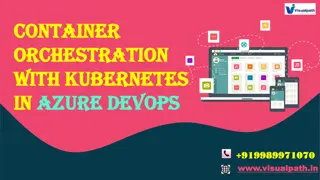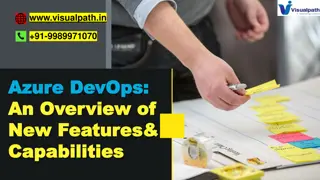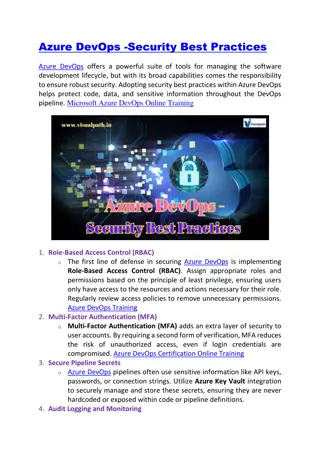Microsoft Integration Day with Azure Service Bus
This event held on September 10, 2016 at Microsoft GTSC, Bengaluru focused on integrating legacy systems, publishing APIs, and automating text extraction from images using Azure Service Bus and APIM. The event showcased the benefits of Service Bus architecture and different communication mechanisms like Relay, Queue, Topic, and Event Hub.
Download Presentation

Please find below an Image/Link to download the presentation.
The content on the website is provided AS IS for your information and personal use only. It may not be sold, licensed, or shared on other websites without obtaining consent from the author.If you encounter any issues during the download, it is possible that the publisher has removed the file from their server.
You are allowed to download the files provided on this website for personal or commercial use, subject to the condition that they are used lawfully. All files are the property of their respective owners.
The content on the website is provided AS IS for your information and personal use only. It may not be sold, licensed, or shared on other websites without obtaining consent from the author.
E N D
Presentation Transcript
Creative Arts Division Presented by Daniel Smith May 26, 2020
About the division and its departments How we are helping students: We have multiple departments that offer students the chance to transfer to a university or pursue a CTE pathway All of them involve creativity
CTE Programs in the division Film/TV Animation Photography Graphic Design Skills taught in other areas can also be used for vocational purposes, such as Sculpture. Music is also working on a CTE certificate. These skills can be used on their own or recombined with other learning in the sciences and related arts. The Art History major may become a production designer, the painter may become an architect.
Transfer Film/TV Production Screenwriting Film/TV/Electronic media AS-T Animation Photography Graphic Design Painting and Drawing Ceramics Sculpture Art History *Art History AA-T *Studio Arts AA-T For students this means they can cross-train in different areas, and still earn a degree within two years. They can make informed choices about their future, and have the skills to recombine knowledge from different fields as they change in the future. 37% increase in completers from last year.
Industry connections Students can be assured that the skills they re using are up to date thanks to the CTE advisory committees and the professional involvement of our faculty in their fields Students can transition into the field using industry partners such as SmugMug for Photography, Apple for Graphic Design, and Oculus/Facebook for Animation to build portfolios, start selling their work, network with professionals, or intern
There is room to grow We can offer students more choices in the future with new curriculum Photo Portfolio, Photogrammetry, Drone Photography, Non-credit CTE awards Animation: Virtual Reality, Augmented Reality, eSports (with Athletics) Film/TV: TV writing, Writing for New Media, Writing for Video Games, Live Production, Web production, Drone Cinematography Music: Music Education, Mariachi Ensemble Art: Mural painting and public art
How is your area is navigating the COVID-19 related changes from a planning and budgeting standpoint? Planning has shifted to provide safety to students, staff, and faculty Many classes are not being offered Face to Face, which severely limits necessary hands-on training Postponing or curtailing key elements of courses in the 2-year course rotation plans and pathways of each area Budgeting Software used on campus must now be available at home. Teaching equipment and materials used at the college, from throwing wheels to musical instruments to cameras and lighting equipment, cannot be used in the usual way. Money apportioned for Life Drawing models, concerts, and more can t be used, but we expect to make up for lost time once we re able to move back into the classroom.
Many departmental program reviews mention a request for removal of minimum unit for tutors. To clarify, the request is to reduce the required units by 3 units, from 12 to 9. How would this help students? It would help student lab tutors in their careers by building an employment history that includes work in their field of study, where presently the opportunity occurs very infrequently. It would also help those students with the greatest need achieve student success with the tutor s help.
12-unit requirement issues Part 1 The local 12 quarter unit requirement makes it difficult to hire student tutors. We often have none. Limited student tutor class schedules often precludes helping other students when they need it This becomes an equity issue, since those who need help the most can t get the help they need due to the lack of tutors. Our students are more often tactile learners, perhaps even higher than the 60% average. These tactile learners are frequently the students who need the most help. Thus, the ability to have hands-on learning helps improve equity. Money procured from Perkins and other sources often cannot be used for student tutors due to the 12-unit requirement.
12-unit requirement issues Part 2 Students at other colleges can more easily build up a paid work history, since they use the 6 semester unit limit. The limit puts us out of alignment with the federal work- study standard, and other community colleges taking part in the Perkins program. The policy is not internally consistent, since some students and programs have a lower minimum than others. De Anza has done so many innovative things to help students that were not previously done. Basic aid for food and housing, money for technology, and more are new and welcome help for students. Considering a 3-unit reduction in the work requirements is another way of taking a fresh look at how we can help students, whether they are the tutors or the ones being tutored. How does the current policy help students?
Many departments have asked for a division counselor. Describe the need for this position. It is easier to provide new information to a single counselor. Keeping current in the variety of areas represented is a challenge. The field is very dynamic, with changes in market demand and technology occurring daily. The CA division programs have a combination of transfer and CTE in multiple areas, such as Photo, Film/TV, Animation, and Art. The areas interrelate, so information in emerging media (for example) is reflected in advice to in Film/TV, Animation, Photo, and Graphic Design students. The 3D camera rig used for Photogrammetry is the same as a VR rig for Film/TV, and can be stitched together by students in Graphic Design as well. Popular thinking about career prospects and ideal transfer universities is often at odds with more recent information.
Questions? Creative Arts Division


